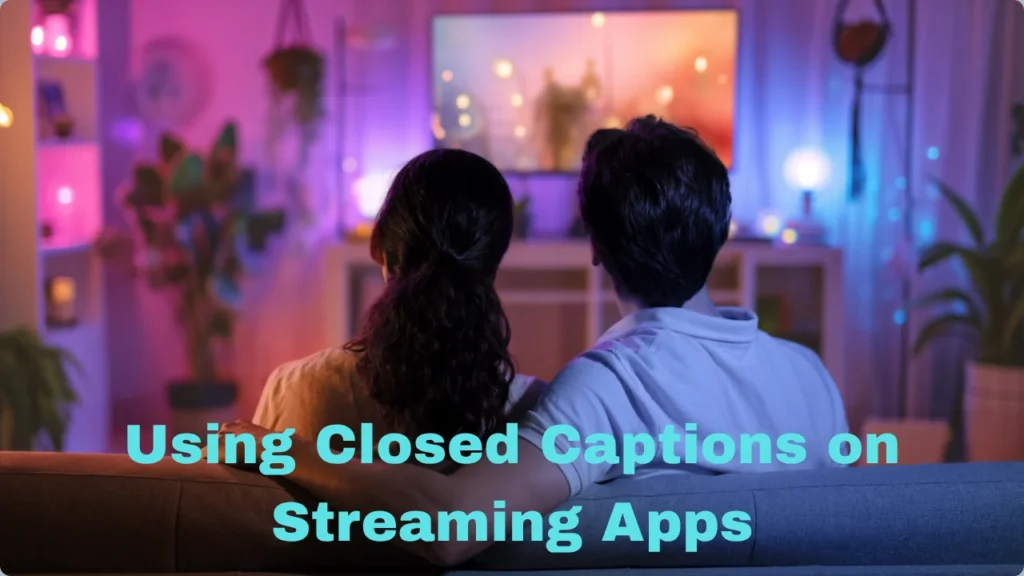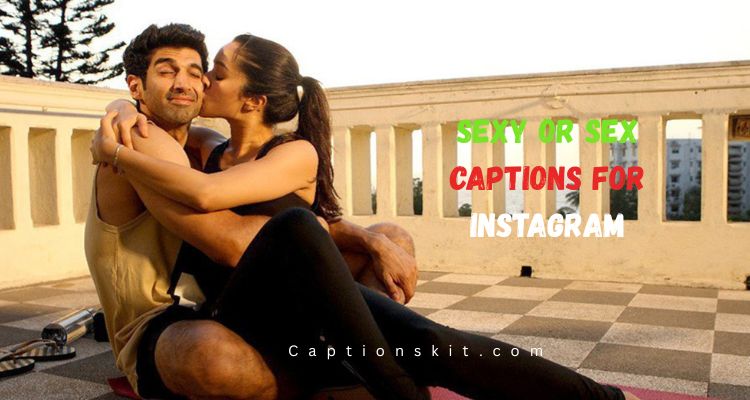310+ Best Top KD 55X80CK Closed Caption

The KD 55X80CK closed caption feature helps users enjoy TV shows and movies without missing any spoken words. Whether you are hard of hearing or watching in a noisy room, captions can help. This guide explains how to turn on, customize, and troubleshoot closed captions on the Sony KD 55X80CK TV.
Also Read: 310+ Top Grief Quotes
Table of Contents
What Is Closed Captioning?
Closed captioning displays spoken words on the screen as text. It also shows sound effects like music or laughter. This feature is useful for people who are deaf or hard of hearing. Many viewers also use it to understand dialogue better, especially when watching foreign content or while multitasking.
The KD 55X80CK closed caption option offers this support right out of the box. But you must know where to find and activate it from the settings.
How to Enable Closed Captions on KD 55X80CK
If you want to use the KD 55X80CK closed caption setting, follow these easy steps. These will help you turn on captions while watching regular TV.
Go to your Home Screen. From there, scroll to Settings. Now choose System or Preferences, depending on your model. Look for the Accessibility option. Inside that menu, you’ll see Closed Captions. Turn this feature to “On.”
Once it’s turned on, captions will appear on supported content like broadcast TV, DVDs, and cable channels. If you mute the volume, some models offer a setting called “On when muted.” This displays captions only when the sound is off.
Types of KD 55X80CK Closed Captions
The KD 55X80CK closed caption feature supports different types of captions. Each type serves a unique purpose depending on the video source and your viewing needs.
Understanding the types helps you pick the right settings and improve your TV experience.
Analog Closed Captions
The CEA-608 system provides 8 caption channels (CC1 to CC4) and 8 text channels (Text1 to Text4 in two languages). Here’s a breakdown:
Primary Caption Modes (CC Modes)
- CC1 – Default English captions for the main program (most commonly used).
- CC2 – Alternative captions (often in another language or for secondary audio).
- CC3 – Sometimes used for Spanish or other language captions.
Text Display Modes (Text Modes)
- Text1 – Used to display full pages of text-based content, like weather or news.
- Text2 – Similar to Text1 but for alternate content or regions.
- Text3 – Another layer for secondary full-screen text.
Note: Text modes can sometimes hide parts of the screen and are rarely used today.
Additional Display Variants (Simulated or Device-Dependent)
Some TVs or cable providers offer variations based on the standard channels. These are not true CEA-608 modes but may be found under advanced caption settings:
- Service 1 (CC1) – Same as CC1, renamed in digital or hybrid systems.
- Service 2 (CC2) – Same as CC2.
- Service 3 (CC3) – Often Spanish captions.
Other Caption Modes You Might See in Menus
These options may appear in analog menus (though they overlap with the first eight modes):
- Channel 1 Captions (Alt CC1) – Used on VCRs or legacy cable boxes.
- Field 1 Data – Refers to how the captions are transmitted (used in advanced setup).
- Field 2 Data – Allows for more caption channels on the second field of analog signals.
📺 How to Use on KD 55X80CK
To access analog caption modes:
Choose from CC1 to CC4 or Text1 to Text4 depending on your source
Go to Settings → Accessibility → Captions → Analog Captions
Only analog input sources (like composite cable) will use these settings. For most modern viewing (streaming or HDMI), digital captions apply instead.
Let me know if you’d like a similar breakdown for digital closed captions (CEA-708)!
Digital Closed Captions (CEA-708 Standard)
Digital captions are used in HD content, streaming apps, and digital broadcast. The KD 55X80CK closed caption feature supports these through the Accessibility → Digital Captions menu.
Font Style
Choose how the caption text looks. Options often include:
- Default
- Monospaced Serif
- Proportional Serif
- Monospaced Sans Serif
- Proportional Sans Serif
Font Size
Change how large or small the caption text appears:
- Small
- Standard
- Large
This helps improve readability from different distances.
Font Color
Pick the color of the text for better visibility. Common choices:
- White (default)
- Yellow
- Red
- Green
Background Color
Choose a solid background behind the caption text:
- Black
- White
- Gray
A strong contrast helps when watching dark or bright scenes.
Edge Type (Text Outline)
Apply an edge to the text for visibility:
- None
- Raised
- Depressed
- Uniform
Edge Color
Select the color of the text border (outline):
- Same colors as font and background options.
Window Color
Sets the background box behind all captions:
- Often transparent by default but can be changed for clarity.
Opacity Settings
You can set opacity for text, background, and window:
- Solid
- Transparent
- Semi-transparent
Helps match visibility with your content.
Text Alignment
Align text in different ways on the screen:
- Left
- Center
- Right
Mostly useful when captions take up more than one line.
Also Read: 180+ Attitude Caption for Instagram
App-Based Subtitles (Streaming Captions)
The KD 55X80CK closed caption feature does not control subtitles inside streaming apps. Instead, each app has its own subtitle or CC settings. Below are 15 common subtitle features you’ll find inside those apps:
Subtitle Language Selection
Choose from multiple subtitle languages like English, Spanish, Hindi, French, etc. Most apps detect your location to suggest the default language.
Subtitle On/Off Toggle
Quickly turn subtitles on or off during playback. This is found in the player controls of almost all major streaming apps.
Subtitle Font Size
Adjust the text size to small, medium, or large for better readability.
Font Style
Apps like Netflix and Prime Video offer different font types such as sans-serif, serif, or cursive styles.
Text Color
Change subtitle text color. White is common, but yellow, red, blue, and green may also be available.
Background Color
Set a solid or transparent background to improve contrast and visibility of subtitles.
Subtitle Positioning
Some apps let you move the subtitle position—bottom, top, or middle of the screen.
Subtitle Opacity
Control the transparency of both text and background. This helps match the look of subtitles with the video scene.
Shadow or Edge Style
Add shadows or outlines to subtitles to make them readable against bright or busy backgrounds.
Subtitle Sync (Manual)
Some apps (like VLC or Plex) allow you to shift subtitle timing forward or backward to match audio manually.
Auto-Save Preferences
Most apps remember your subtitle settings and language preferences for future use.
HDMI Device Captions Features

When you connect an external device via HDMI, that device controls its own closed captions or subtitles. Here are 15 key features or settings available on HDMI-connected devices that influence your KD 55X80CK closed caption experience:
Native CC Toggle (On/Off)
Most devices (like Fire Stick or Roku) allow users to enable or disable closed captions in their system settings or playback menu.
Subtitle Language Selection
Devices offer multiple language options. You can choose English, Spanish, French, or any supported subtitle language.
Font Size Adjustment
You can adjust the size of subtitle text to make it small, medium, or large for better readability on the TV screen.
Font Style Customization
Pick from different fonts—serif, sans-serif, cursive, or system default—based on your viewing preference.
Text Color
Select your preferred subtitle color: white, yellow, red, blue, green, etc., depending on contrast needs.
Background Color
Set a background color (black, gray, transparent) to improve subtitle readability on bright or dark content.
Text Opacity
Adjust text and background transparency to match your room lighting or video content.
Edge Style (Outline or Shadow)
Add outlines, drop shadows, or glow to text to make it pop on-screen. Improves readability during action scenes.
Subtitle Positioning
Move captions to top, middle, or bottom of the screen. Useful for adjusting placement during fast-paced scenes.
Subtitle Sync (Timing Offset)
Adjust the timing of subtitles if they appear too early or late compared to audio—especially useful on Plex or VLC.
Adjusting Closed Caption Settings
The KD 55X80CK closed caption feature offers many customization options. You can change how the captions look on your screen. You can pick the text size, font color, background color, and more. These options are found in the same Accessibility menu.
Here’s a table with common settings and what they do:
| Setting | Description |
|---|---|
| Text Size | Small, Medium, or Large |
| Font Style | Serif, Sans Serif, Casual, Cursive, etc. |
| Font Color | White, Yellow, Blue, Red, and more |
| Background Color | Black, Gray, Transparent, etc. |
| Edge Type | None, Raised, Depressed, Uniform |
These changes help make the text easier to read depending on your screen or lighting condition.
Using Closed Captions on Streaming Apps

The KD 55X80CK closed caption feature doesn’t control captions in apps like Netflix or Hulu. You’ll need to turn on captions from within each app. Start by playing a video. Then pause it. Look for the subtitle or CC icon and choose your language. Most apps will remember your choice for the next time.
On YouTube, tap the gear icon, select Captions, and pick your language. These captions are usually auto-generated, so accuracy may vary.
When Closed Captions Don’t Work
Sometimes, the KD 55X80CK closed caption setting is on, but no captions appear. This can happen if the content doesn’t include caption data. Not all broadcasts or streaming shows offer captions. It’s also possible that your TV’s firmware needs an update.
Go to Settings → System → About → Software Update to check if your TV has the latest version. If it doesn’t, install the update and restart the TV. Then try using captions again.
Another issue could be input source. If you’re using HDMI from a DVD player or game console, you might need to turn on captions on that device too.
Benefits of Closed Captions
There are many reasons to use the KD 55X80CK closed caption option. It improves accessibility, especially for those with hearing problems. It also helps with language learning. Reading text while listening improves understanding.
Some people prefer watching with captions in loud environments. Others like to keep the TV muted while someone sleeps nearby. In all these cases, closed captions are very helpful.
Difference Between Subtitles and Closed Captions
Many people confuse subtitles with closed captions. The KD 55X80CK closed caption feature shows spoken words and sound effects. Subtitles only show the spoken dialogue.
Here’s a comparison table to make things clear:
| Feature | Closed Captions | Subtitles |
|---|---|---|
| Shows Dialogue | Yes | Yes |
| Shows Sound Effects | Yes (music, sounds, etc.) | No |
| For Deaf Users | Yes | No |
| Editable on TV | Yes | Sometimes |
If you’re hard of hearing, closed captions are a better choice.
Tips to Get the Best Experience
If you’re not seeing captions clearly, try adjusting the text size or background color. High contrast helps. Make sure the content you’re watching includes captions. If using HDMI devices like Fire Stick or Xbox, check those settings too. They often have their own subtitle controls.
To save time, leave the KD 55X80CK closed caption feature set to “Always On.” That way, it works for any supported content automatically.
Also Read: Top 21st Birthday Captions For Birthday Guys
Conclusion
The KD 55X80CK closed caption feature is more than just a tool—it’s a necessity for many viewers. It ensures that no dialogue or sound cue is missed, no matter the situation. Whether you’re watching live TV, streaming online, or using HDMI inputs, you can benefit from this function.
By knowing how to activate and customize it, you’ll get the most out of your Sony KD 55X80CK TV. From helping with accessibility to boosting your language skills, closed captions make every show easier to enjoy.






